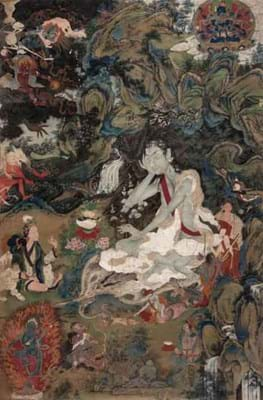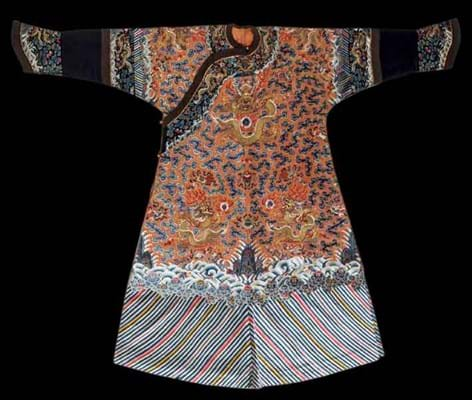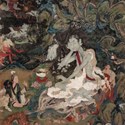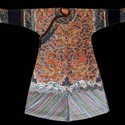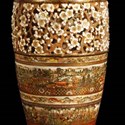Monumental in size at 4ft 2in by 2ft 9in (1.27m x 86cm), this thangka - consigned from a private collection in Europe - represents one of the finest products of the Karma Gardri School of Eastern Tibet where Chinese stylistic conventions were carefully woven into the language of Tibetan art.
The unusual subject, presented flanked by his students in a mountainous landscape setting of waterfalls and clouds, is the yogi Milarepa, an 11th/12th century Tibetan who rejected black magic and worldly possessions in favour of a Himalayan retreat where he achieved enlightenment. The stories of demons, mountain goddesses and mythical hunters he told through songs provide the inspiration for this thangka.
In size and execution it bears great similarity to surviving thangkas depicting the Ninth Karmapa, Wanchung Dorje (Rubin Museum, New York) and The Adept Tilopa (US private collection) and may have been part of the same set.
Estimated at £60,000-80,000 for the sale on November 11, it eventually sold to a private European buyer at £450,000.
Commenting on this price after the sale executive chairman Stephan Ludwig said: "It should be noted that we are unique amongst most of our peers in dropping the buyer's premium down to 12% at £150,000 thus making higher value lots of this nature materially cheaper for our buyers."
Court Robe
The same vendor was also the consignor of a 19th century Chinese Imperial consort's formal court robe or jifu.
Worked to an apricot-ground, it is embroidered in shades of blue, green, red, aubergine and ochre and couched vibrant gold threads with nine five-clawed dragons clutching or confronting flaming pearls amidst dense ruyi clouds interspersed with bats and the Eight Precious Things. The matching dark blue-ground cuffs and collar are worked with further dragons amidst bats, clouds and waves.
Estimated at £8000-10,000, it sold at £35,000 to a UK buyer.
Satsuma Vase
The sale - just 84 lots that brought a premium-inclusive total of £810,000 - also included an outstanding Kinkozan Satsuma vase by Sozan. This is not a strong market but few pieces are decorated with such elaborately pierced and moulded upper sections, a feat of technical virtuosity for both the potter and the kiln handlers.
Signed in an elaborate baroque cartouche Dai Nihon Satsuma Kinkozan sei, the 12in (30cm) vase carries a further signature on the reserve, Sozan ga and also an oval Kinkozan paper label to base. After Yabu Meizan, Sozan is arguably the most sought after of the Meiji Satsuma artists and this was clearly a deluxe production.
Offered in its original wooden box (that also carried a paper label reading S. Kinkozan Manufacturer of Fine Porcelains Kyoto, Japan, Established 1643) it improved upon what were modest hopes £3000-5000, to sell at £30,000 to a private Australian buyer.
The buyer's premium was 24/12%.

